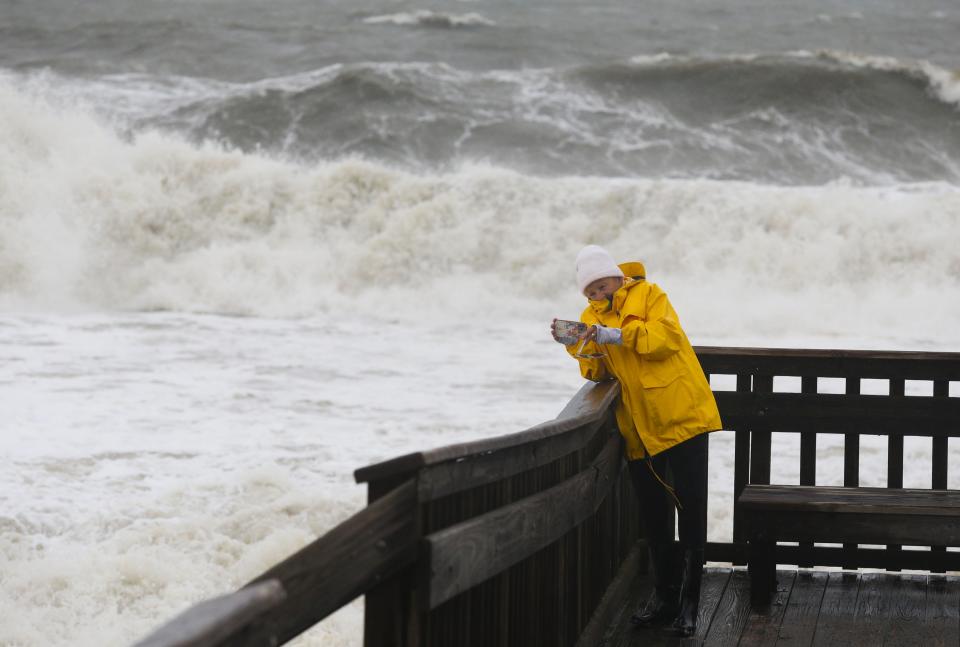How a coastal storm ruined a summer excursion off Delaware coast
From the high dunes of Cape Henlopen, beach visitors enjoy the sight of passing ships. In July 1933, a steady stream of tankers, freighters and occasional sailing schooners paraded past the cape. Interspersed with the large ocean-going ships were smaller but powerful tugs, towing a short string of barges voyaging between coastal ports.
The barges were equipped with simple crew’s quarters and spartan sleeping accommodations sufficient for a day or two at sea.
The early summer weather promised to be pleasant, and some of the crew were accompanied by their relatives hoping to find some relief from the doldrums of the Great Depression then sweeping the United States. On this trip, a few of the sailors brought their wives. Fletcher Williams brought his five-month-old puppy, Teddy.

In the first week of July 1933, the weather turned out not to be pleasant. It was raining as the tug Kaleen towed a set of barges along the Delaware coast.
In the 1930s, weather forecasters had no radar or weather satellites. Reports of storms received by ships at sea were relayed by phone to mariners along the coast. It was a primitive system, and storms seemingly appeared out of nowhere, which was the case off Fenwick Island when heavy rain, high winds and strong waves engulfed the Kaleen and its barges.
Oscar Johnson, a veteran Delaware skipper, captained the Kaleen, and he had never experienced seas so rough at this time of the year. As the waves battered the barges, Johnson began to doubt that his string of barges could survive the storm.
While he struggled to maintain headway in the Kaleen, he knew that the waters off Fenwick Island were peppered with shallows and shoals, and if one of the barges struck one of these underwater hazards, it could endanger all the tethered vessels.
COASTAL STORM: Ophelia causes flooding and damage at Dewey Beach: Photos
Johnson decided that the safest thing to do was to cut his tow lines and have the barges anchor until the storm had passed. Just as he was about to notify those on the barges of his decision, he saw a distress signal from one of the barges. He turned and steamed to the rescue.
According to the Delaware Coat News, “He threw a line to the Paul E. Thurlow and took off those aboard one-by-one. Johnson then edged the Kaleen toward the barge, S. G. Wilder, but he found that the crew of that vessel had already boarded a small boat, and, apparently, were able to care for themselves.
Unfortunately, The New York Times reported, “Two of the five men from the barge S. G. Wilder, who were missing on Tuesday night after drifting off the Jersey coast in a dory, were picked up yesterday as the three-day coastal storm receded and they were taken safely into Norfolk, Va. The three others were believed lost.”

Johnson was able to pluck the remaining men and women aboard the other barges onto the Kaleen, and they put ashore at Lewes, where they described the terrifying storm and Captain Johnson’s heroism in saving their lives.
Aboard one of the remaining barges, Fletcher Williams was convinced that his vessel was doomed. Williams believed that he could swim to Johnson’s tug, but could he leave Teddy behind? The sailor took some line, looped it around Teddy, and swung the puppy onto his back. After Williams tightened the lines that strapped Teddy to his back, the sailor jumped from the barge into the stormy waves.
As Williams struggled to keep his head above water, he and Teddy were spotted by Johnson’s crew on the tug. A rope was thrown to him from the Kaleen; and he was hauled aboard. As Williams untied the puppy’s makeshift harness, the seaman and Teddy were thoroughly drenched, but alive!
DELAWARE HISTORY: How the DNA from 17th-century graves unearthed near Rehoboth may rewrite Delaware history
Principal sources
Delaware Coast News, July 7, 1933.
The New York Times, July 6, 1933.
Milford Chronicle July 7, 1933.
This article originally appeared on Salisbury Daily Times: How a coastal storm ruined a summer excursion off Delaware coast

